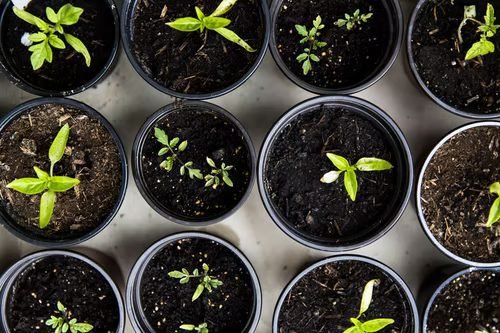Last Updated on August 10, 2022 by
Food is a really basic item and necessity in our culture that it is sometimes disregarded. In many respects, our methods of producing the bulk of our food have changed little through time, although practically everything else, including the way people live, work, and engage, has changed tremendously.
We have an option in how we create food, and as the world changes, it is critical to study alternatives to our old food production methods. Our cropland capital is dwindling, while the planet’s population and standards of living are rising, with many people already struggling to get enough food. What’s the answer? Continue reading to learn more.
Why We Need To Expand And Incorporate Farming Land Options

We may fairly claim that our planet appears to have a definite area, of which approximately 70% is water and just 13% is prospective arable land of which only nearly half is utilised for agricultural purposes.
Good farmland is in short supply, while the world’s relentless population increase strains the present supply beyond its capabilities. Current forecasts for the global population show a 40% increase in the next 40 years, driving the stats down in an ever-increasing negative cycle.
It is critical to recognize that the remaining arable land suited for efficient agriculture consists mostly of pockets of land contained within mountainous regions, scattered in urbanized areas, and isolated wildlands best maintained intact for apparent preservation reasons.
The majority of agricultural land that can be exploited properly with present methods is currently in use. Various firms are being formed to aid in the expansion of total food production capability.
They are classified into two categories:
- The expansion of agricultural areas through innovative irrigation systems and the development of new food crops that can flourish in tougher circumstances.
- Increased yield from existing agricultural areas through the use of novel food crops, alternative irrigation systems, and better capacity fertilizers.
Rather than producing our food in remote sections of the country and using significant resources on transportation, growing food within cities could provide an extra supply of agricultural capital. This has the extra benefit of geographically connecting the customer and the producer, decreasing distance and hence transportation costs of food goods, and giving some sociological advantages to society.
Table of Contents
Scaling Of Urban Agriculture

We may see urban farming on a range of dimensions, from a few edible plants on the window ledge to large-scale vertical farming companies.
Urban gardening on a small scale:
The food is created by the same individuals who consume it, which is characteristic of the small scale. Many tribes like cultivating specific herbs or spices within their territory to ensure freshness or a taste that they cannot find elsewhere.
Urban gardening on a medium scale: This is often a single entity-organized enterprise in which people of the local population are employed to supply food to the said community. They frequently concentrate on a particular sustainable approach to food growth that standard channels do not give or only provide at a significant cost.
Urban Farming On A LargeScale
Large-scale urban farming is a whole different beast than medium and small-scale urban farming. With such a vast volume of production, it is difficult to envisage this being structured mostly by a single professional business that employs employees full-time to manage its facilities.
To attain a substantial amount of output in city environments, and taking into account the financial forces at work in such a context, agriculture may need to be layered to make the most efficient use of the pricey land. Depending on the cost of land, this might be as few as a few storeys or an equivalent to the highest skyscraper.
This drastically changes the way agribusiness is conducted in many ways, and interacting with a farm in a metropolitan setting is an altogether different encounter from conventional farming enables.
Current research describes a possible enterprise that could feed up to 50.000 individuals based on a calorie consumption of 2,200 individuals, a staple based on the nutritional needs, and 19 stories on a 250.000 sq. ft zone, and 43 stories on approx. 90.000 sq.ft area. This would include raising the most nourishing fish in tanks and breeding hens primarily for egg production.
Urban farming necessitates a different strategy than conventional farming; for example, because there is less access to sunshine, artificial light must be given. Furthermore, while dealing with soil is impracticable, different soil-less approaches can enhance growth conditions, and great efficiencies can be achieved by managing the environment.
The Bottom Line
For enclosed vertical farming structures, incorporate both infrared lighting and led lighting for plant growth and replanting purposes respectively. Contact led strip suppliers for more info on led lighting. For modern fish farming, you will need proper filtration media that can be easily supplied by a media manufacturer of your choice.
Largescale farming will require you to store some valuables like land documents. For this consider purchasing a safe from a reputable safe manufacturer to keep things intact. With that said, the future of urban agriculture is now in your hands, all the best!
Read more: Are agricultural equipment tools effective in organic farming?



























